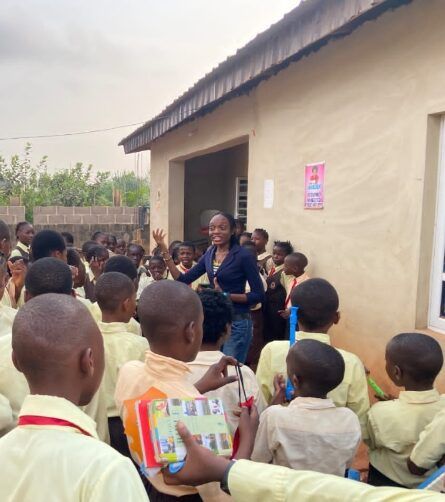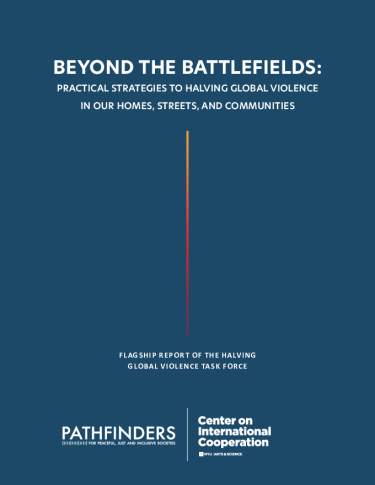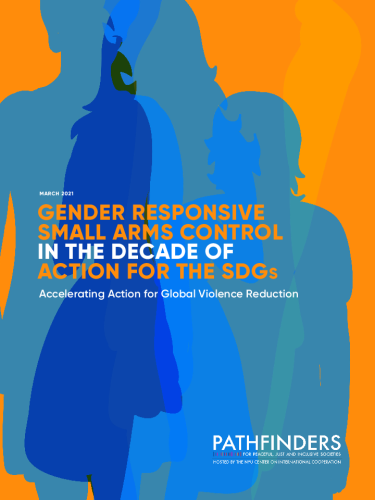More Than a Talking Point: How Gender-Responsive Small Arms Control Saves Lives

It’s been a significant summer for the small arms control and disarmament communities. The every-six-year Review Conference for the United Nations (UN) Programme of Action on Small Arms and Light Weapons (“RevCon4”) took place in New York during June, and the Tenth Conference of States Parties to the Arms Trade Treaty (CSP10) just wrapped up in Geneva in August.
At these major global discussions, observers may have seen representatives of the Gender Equality Network for Small Arms Control (GENSAC), along with various UN member states and civil society partners making the case for “gender mainstreaming” and “gender-responsive approaches to small arms control.”
Many are understandably confused by these terms. A bullet can’t tell someone’s gender, so what does “gender-responsive small arms control” even mean? And how do these terms or broad commitments to “gender mainstreaming” made by governments in large cities like New York or Geneva actually improve the lives of those living at the front lines of gun violence?
While we often work under the assumption that weapons themselves are gender-blind, their effects are anything but. There are tremendous differences in the impacts of gun violence based on gender, with marginalized groups left especially vulnerable. And because of that, it is crucial to ensure that women’s experiences in this arena, as well as the place that they occupy in their communities and broader society, are considered when creating and enforcing small arms control efforts. When a gender perspective is applied, it can yield better results for everyone.
This is the driving idea behind GENSAC, a network comprised of dozens of grassroots civil society organizations, women peacebuilders, and security officials from around the world with a presence across Africa, Latin America, the Caribbean, and the Western Balkans. Its members share a dedication to preventing armed violence, promoting gender equality, and achieving development goals through a gendered approach to small arms control. The role of the network, by its turn, is to elevate the voices of these women, and make sure that they have an active role in discussions at the local, national, and international level on topics related to disarmament and small arms control.
GENSAC’s work over the past year demonstrates that, when properly applied, this “gendered approach” is more than a talking point: it can save lives and build peace.
So what does “gender-responsive small arms control” actually look like in practice?
1. Improving security in conflict-affected regions
In conflict-affected areas of Africa, specifically along the border of Burundi and the Democratic Republic of Congo, GENSAC members observed that the women in villages were often the first to notice influxes of weapons into their communities as a precursor to surges of violence. In response, GENSAC organized dialogues between women in the community, security officials, elected leaders, and other policy makers so they could share the specific ways their communities were at risk of armed violence. This knowledge enables authorities to improve security policies and presence in the region—and to stay ahead of possible violent outbreaks.
2. Advancing groundbreaking new laws
In Latin America, GENSAC supported its members to bring together civil society leaders with elected members of Parliaments from across the continent to find solutions to the high rates of femicide that have plagued the region. By applying a gender perspective and examining gender-disaggregated homicide data, they established that many of these crimes were committed with firearms legally purchased by intimate partners and family members of the victims, with a previous history of violence. Empowered by this knowledge, GENSAC members are now working hand-in-hand with elected leaders to advance “red flag laws” that prevent domestic violence offenders from obtaining guns.
3. Ending forced marriages and improving graduation rates
In the Great Lakes Region of Africa, a gender-focused approach to small arms translated into GENSAC members discovering strong links between communities with high school absenteeism among women and girls, the incidence of forced marriages, and illicit weapons proliferation. Through subsequent dialogues, GENSAC members made it clear to government officials that their strategies to improve graduation rates and end forced marriages must also incorporate efforts to curb the illegal circulation of firearms.
4. Countering irresponsible marketing of weapons and violence
While the field of arms control has frequently failed to incorporate gender, certain arms manufacturers and armed groups have long sought to directly make the case that using firearms is a core part of being a man. This has been reflected in gun marketing, militia recruitment efforts, and even in popular movies and video games. In the past year, GENSAC has helped to bring experts together across regions to highlight solutions from the Western Balkans, the United States, and the Caribbean on how civil society can partner with media, entertainment companies, and private sector groups to advocate for more positive notions of masculinities in advertisement and media, providing healthier examples of masculine identities, and delinking the idea of manhood from the use of guns and violence.
5. Improving school safety
In West Africa, school-age children face a variety of threats ranging from violent extremism to organized crime to domestic violence. This year, in commemoration of International Women’s Day, GENSAC supported civil society members in Mali, Cameroon, and Nigeria to conduct outreach activities in schools and with youth to better understand—and educate—about the unique threats young people face in the region and how those risks differ by gender, often stemming from abusive relationships, drug use, and family dynamics. Following the activities, GENSAC is supporting students in the creation of school clubs where students can support one another in identifying and addressing these risk factors for violence.
Spreading the Word: Bringing Grassroots Voices and Solutions to the Global Stage
The examples above represent just a few ways that GENSAC and its members are using a gender-focused approach to small arms to advance lifesaving policies and strategies. Women and civil society leaders based in local communities have much to offer to the international community in the way of innovative ideas and practical steps to reduce armed violence and save lives. However, far too often these voices are excluded from arms control and disarmament discussions. Though the arms trade, small arms control, and ammunition management have life-altering impacts on local communities, decisions regarding these issues are frequently made in far-off capitals.
Over the past year, GENSAC has been proud to represent these communities by collecting recommendations developed by grassroots groups and presenting them at major international forums, including RevCon4, CSP10, and numerous other venues. It has been an encouraging first step to see many of these recommendations being slowly adopted into international declarations and outcome documents, showcasing ways to better link gender and small arms together.
Local communities are well positioned to lead in the way when given a platform and the means to do so. We must now build on this progress to further incorporate gender into small arms control to more effectively reduce armed violence and save lives.
Photo Caption: “GENSAC members in Nigeria working with schools to address the threats of gender-based violence (GBV), armed violence, and all forms of violence faced by young people in the region and the ways these risks differ by gender.” © Keen and Care Initiative (KCI).
Related Resources
-
-

Beyond the Battlefields: Practical Strategies to Halving Global Violence in Our Homes, Streets, and Communities
The Halving Global Violence Task Force at NYU’s Center on International Cooperation (CIC) presents a comprehensive roadmap to cut global violence by half in this new report. This pivotal analysis culminates a three-year collaborative effort involving international policymakers, distinguished researchers, field experts, and activists.
-
Stay Connected
Subscribe to our newsletter and receive regular updates on our latest events, analysis, and resources.
"*" indicates required fields



